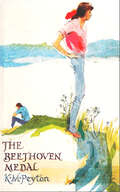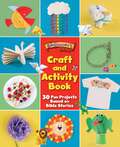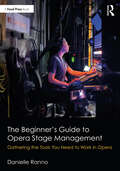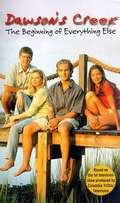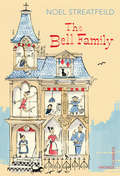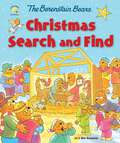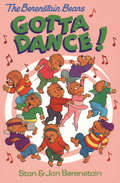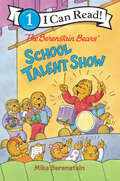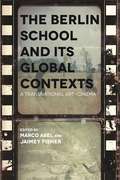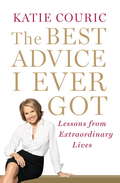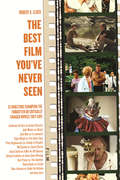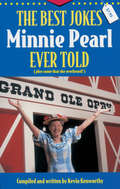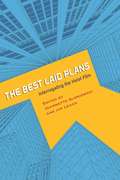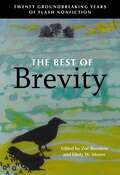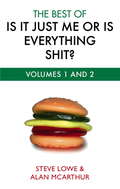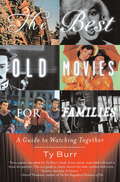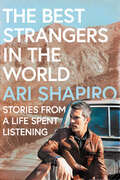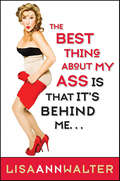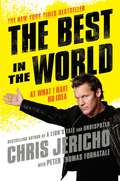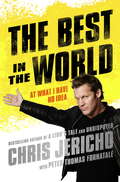- Table View
- List View
The Beethoven Medal (Pennington #2)
by K. M. Peyton"There are plenty of nice steady boys you could go out with," her mother told her, but Ruth Hollis knew that beside Patrick other boys would seem insipid and dull. Ruth was quiet, but she had a streak of stubbornness in her nature, and she enjoyed a challenge. When she was younger and crazy about horses, she had always liked to ride the most difficult ponies; so perhaps it wasn't surprising that now, as a girl of sixteen, she should find herself involved with Patrick Pennington--a singularly complex, wild, and talented young man. Nevertheless, Ruth found herself wondering if this particular challenge was going to prove too much for her--with far-reaching consequences for herself and her family. K. M. Peyton, winner of the Carnegie Medal and the Guardian Award for her distinguished contribution to children's literature, has written a tender, funny, and convincing story of two very appealing young people on the verge of love.
The Beginner's Bible Craft and Activity Book: 30 Fun Projects Based on Bible Stories (The Beginner's Bible)
by The Beginner's BibleUnleash your creativity and make your favorite Bible stories come to life! Featuring 30 fun and engaging activities, including crafts and recipes, with easy-to-follow instructions, The Beginner&’s Bible Craft and Activity Book turns any time into playtime. Kids will love transforming everyday objects into artful masterpieces, and each craft is inspired by a beloved Bible story right from The Beginner&’s Bible!The Beginner's Bible is a perennial favorite with young children and their parents, impacting 28 million families for over 30 years. Now kids ages 4-8 can interact with their favorite Bible stories and characters like never before!The Beginner&’s Bible Craft and Activity Book:Features 30 fun and unique activities, including crafts and recipesTakes inspiration from favorite Bible stories from the Old and New TestamentsIncludes beautiful and unique crafts made from common household items, with easy-to-follow instructions and a shopping guideIs the perfect quiet time activity for kids 4-8 to do at home, during Sunday school, or wherever inspiration strikesFeatures vibrant, three-dimensional art and full-color photosIs part of The Beginner&’s Bible® brand, the bestselling Bible storybook brand of our time, impacting 28 million families for over 30 years Review The Beginner&’s Bible&’s complete library for dozens of titles available for kids of all ages and reading levels.
The Beginner’s Guide to Opera Stage Management: Gathering the Tools You Need to Work in Opera
by Danielle RannoThe Beginner’s Guide to Opera Stage Management is the first book to cover theatrical stage management practices specifically for opera productions, providing an invaluable step-by-step guide. Beginning with a brief history of opera and detailing its difference from musical theatre, the book covers stage management best practices through prep, rehearsals, tech, performance, and wrap up. From the moment a manager accepts a contract, right through to archiving paperwork, this essential toolkit covers each step of a stage manager’s journey. Working with a score, reading music, working with singers, conductors, and musicians, basic duties of a stage manager versus an assistant stage manager, and other tasks specific to opera are also included in this comprehensive guide. This book is full of tips and tricks, as well as the good, bad, and ugly stories from opera stage managers, sharing both their experiences and mistakes. This is the perfect how-to book for the professional or emerging stage manager looking to work in opera, or to expand their existing stage management skillset.
The Beginning Of Everything Else (Dawson's Creek)
by Jennifer BakerSometimes life happens even when you're not sure you're ready for it. In Capeside, the sleepy New England coastal town where teenagers Joey, Dawson, Pacey, and Jen live, this year the river is running fast. Choices will be made, and chances will be taken. Promises will be broken, and desires revealed. Joey, Dawson, Pacey, Jen. Four fifteen-year-olds ready to take on the world. They're learning about life, and learning how to love.
The Bell Family
by Noel StreatfeildIf you love Noel Streatfeild’s Ballet Shoes, you’ll adore The Bell Family.'Well, little people, what's the news?’Meet the big, happy Bell family who live in the vicarage at St Marks.Father is a reverend; Mother is as kind as kind can be. Then there's all the children – practical Paul, dancing Jane, mischievous Ginnie, and finally the baby of the family, Angus, whose ambition is to own a private zoo (he has already begun with his six boxes of caterpillars). And not forgetting Esau, a surefire competitor for the most beautiful dog in Britain.Follow their eventful lives from tense auditions to birthday treats; from troubled times to hilarious escapades. The perfect Christmas gift for ballet-loving children.Includes exclusive material: In the Backstory you can find out which one of the Bell children you most resemble!
The Bennetts: An Acting Family
by Brian Kellow&“An engrossing new page turner&” about one of old Hollywood&’s royal families: &“theater people don't get more interesting, and it's a true tale well told" (Hollywood Reporter). In the early 1930s, Constance Bennett was the highest paid star in Hollywood, famous for dramatic roles before reinventing herself in the classic comedy Topper, starring opposite Cary Grant. Her sister Joan played the femme fatale in films like Scarlet Street and also starred in lighter films like Father of the Bride. Though their names are not well known today, the Bennett family is one of the most storied families in Hollywood history. The saga begins with Richard Bennett, who left small-town Indiana to become one of the bright lights of the New York stage during the early twentieth century. In time, however, Richard's fame was eclipsed by that of his two acting daughters. But the Bennett family also includes another sister, Barbara, whose promising beginnings as a dancer gave way to a turbulent marriage to singer Morton Downey and a steady decline into alcoholism. Constance and Joan were among Hollywood's biggest stars, but their personal lives were anything but serene. In 1943, Constance became entangled in a highly publicized court battle with the family of her millionaire ex-husband, and in 1951, Joan's husband, producer Walter Wanger, shot her lover in broad daylight, sparking one of the biggest Hollywood scandals of the 1950s.
The Berenstain Bears Christmas Search and Find (Berenstain Bears/Living Lights: A Faith Story)
by Jan & BerenstainSearch and find your way through Christmas with the Berenstain Bears! Readers will love exploring each and every page of this oversized, interactive board book and discovering all the carefully hidden objects. Perfect for gift giving, quiet time, travel, or any time during the holiday season, The Berenstain Bears Christmas Search and Find delivers hours of fun while building important skills, such as concentration, reading comprehension, and attention to detail.The Berenstain Bears Christmas Search and Find—part of the popular Zonderkidz Living Lights™ series of books with over 13 million copies sold—is perfect for:Children ages 2-6Christmas gifts, stocking stuffers, quiet time, boredom busters, or road tripsKids who love puzzles, games, and seek-and-find activitiesSharing on a lap or independent play The Berenstain Bears Christmas Search and Find is an addition to the Living Lights™ series that:Features the hand-drawn artwork of the Berenstain familyContinues in the much-loved footsteps of Stan and Jan Berenstain in this The Berenstain Bears series of books Is part of one of the most loved bestselling children&’s book series ever created, with more than 250 books published and nearly 300 million copies sold to date
The Berenstain Bears Gotta Dance! (I Can Read!)
by Stan Berenstain Jan BerenstainCan Brother Bear overcome his fear and learn to dance? Brother Bear thinks dancing is stupid until Sister Bear tells him that his longtime crush, Bonnie, may be going to the spring fling with Too-Tall! <P><P>Brother decides that he needs to learn to dance--and fast. Can the Bear family band together in time to teach him enough moves to overcome his fear of the dance floor?
The Berenstain Bears Storybook Bible Search and Find (Berenstain Bears/Living Lights: A Faith Story)
by Mike BerenstainSearch and find through your favorite Bible stories with the Berenstain Bears! Readers will love exploring each and every page of this interactive book and discovering all the carefully hidden objects. Perfect for quiet time, traveling, summer reading, or any time, The Berenstain Bears Storybook Bible Search and Find will deliver hours of fun while also building important skills, such as concentration, reading comprehension, attention to detail and early math skills like counting 1-10.The Berenstain Bears Storybook Bible Search and Find—part of the popular Zonderkidz Living Lights series of books—is perfect for:Children ages 3-6Quiet time, boredom busters, road trips, stocking stuffers, Easter baskets, or other gift giving occasionsKids who love puzzles, games, and activities The Berenstain Bears Storybook Bible Search and Find is an addition to the Living Lights™ series that:Features the hand-drawn artwork of the Berenstain familyContinues in the much-loved footsteps of Stan and Jan Berenstain in this Berenstain Bears series of booksIs part of one of the bestselling children&’s book series ever created, with more than 250 books published and nearly 300 million copies sold to date
The Berenstain Bears' School Talent Show (I Can Read Level 1)
by Mike BerenstainThe Berenstain Bears take part in the school talent show in this exciting addition to the classic New York Times bestselling series.From the cub’s magic tricks to Trudy’s yodeling, any student can be in the show. All you need is a talent! Beginning readers will enjoy this fun tale about their favorite family of bears.The Berenstain Bears' School Talent Show is a Level One I Can Read book, which means it's perfect for children learning to sound out words and sentences.
The Berlin School and Its Global Contexts: A Transnational Art Cinema (Contemporary Approaches to Film and Media Series)
by Gerd Gemünden Hester Baer Ira Jaffe Brad Prager Lutz Koepnick Jaimey Fisher Robert Dassanowsky Marco Abel Lisa Haegele William Fech Alice Bardan Inga Pollmann Roger Cook Michael Sicinski Chris Homewood Roland VégsoThe Berlin School and Its Global Contexts: A Transnational Art-Cinema came about in light of the Museum of Modern Art (MOMA)’s 2013 major exhibition of works by contemporary German directors associated with the so-called Berlin School, perhaps Germany’s most important contemporary filmmaking movement. Christoph Hochhäusler, the movement’s keenest spokesperson, stated that "the Berlin School, despite what the label suggests, is not a specifically German phenomenon. All over the world there are filmmakers exploring related terrain." In response to this "transnational turn," editors Marco Abel and Jaimey Fisher have assembled a group of scholars who examine global trends and works associated with the Berlin School. The goal of the collection is to understand the Berlin School as a fundamental part of the series of new wave films around the globe, especially those from the traditional margins of world cinema. For example, Michael Sicinski and Lutz Koepnick explore the relation of the Berlin School to cinema of Southeast Asia, including Apichatpong Weerasethakul and Tsai Ming-liang; Ira Jaffe and Roger Cook take a look at Middle Eastern film, with Nuri Bilge Ceylan and Abbas Kiarostami, respectively. The volume, however, also includes essays engaging with North American filmmakers like Kelly Reichardt and Derek Cianfrance as well as European auteurs like Antonioni, Tarr, Porumboiu, McQueen, and the Dardennes. Bringing German cinema into dialogue with this series of global cinemas emphasizes how the Berlin School manifests—whether aesthetically or thematically, politically or historically—a balancing of national particularity with global flows of various sorts. Abel and Fisher posit that since the vast majority of the films are available with English subtitles (and at times also in other languages) and recent publications on the subject have established critical momentum, this exciting filmmaking movement will continue to branch out into new directions and include new voices. The Berlin School and Its Global Contexts folds German-language cinema back into conversations with international as well as transnational cinema. This volume will be of great interest to scholars of German and global cinema.
The Best Advice I Ever Got: Lessons from Extraordinary Lives
by Katie CouricWhat was the tipping point for Malcolm Gladwell? What unscripted event made Meryl Streep who she is? How did Mario Batali cook up his recipe for success? In this inspiration-packed book, Katie Couric reports from the front lines of the worlds of politics, entertainment, sports, philanthropy, the arts, and business--distilling the ingenious, hard-won insights of leaders and visionaries, who tell us all how to take chances, follow our passions, cope with criticism, and, perhaps most important, commit to something greater than ourselves.Among the many voices to be heard here are financial guru Suze Orman on the benefits of doing what's right, not what's easy; director Steven Spielberg on listening rather than being listened to; quarterback Drew Brees on how his (literal) big break changed his life; and novelist Curtis Sittenfeld on the secrets of a great long-term relationship (she suggests marrying someone less neurotic than you); not to mention:* Michael Bloomberg: "Eighty percent of success is showing up . . . early."* Eric Stonestreet: "Remember that the old lady who's taking forever in line is someone's grandma."* Joyce Carol Oates: "Read widely--what you want to read, and not what someone suggests that you should read."* Jimmy Kimmel: "When in doubt, order the hamburger.'"* Apolo Ohno: "It's not about the forty seconds; it's about the four years, the time it took to get there."* Madeleine K. Albright: "Never play hide-and-seek with the truth."Along the way, Couric reflects on the good advice--and the missteps--that have guided her from her early days as a desk assistant at ABC to her groundbreaking role as the first female anchor of the CBS Evening News. She reveals how the words of Thomas Jefferson helped her deal with her husband's tragic death from cancer, and what encouraged her to leave the security of NBC's Today show for a new adventure at CBS.Delightful, empowering, and moving, The Best Advice I Ever Got is the perfect book for anyone who is thinking about the future, contemplating taking a risk, or daring to make a leap into the great unknown. This book is for all of us, young or old, who want to see how today's best and brightest got it right, got it wrong, and came out on top.
The Best Film You've Never Seen: 35 Directors Champion the Forgotten or Critically Savaged Movies They Love
by Robert K. ElderRevealing a festival of guilty pleasures, almost-masterpieces, and undeniable classics in need of revival, 35 directors champion their favorite overlooked or critically savaged gems in this guide. The list includes unsung noir films The Chase and Murder by Contract, famous flops Can't Stop the Music and Joe Versus the Volcano, art films L'ange and WR: Mysteries of the Organism, theatrical adaptations The Iceman Cometh and The Homecoming, B-movies Killer Klowns from Outer Space and The Honeymoon Killers, and even Oscar-winners Breaking Away and Some Came Running. The filmmakers, including Guillermo del Toro, John Waters, John Woo, Edgar Wright, and Danny Boyle, defend their choices, wanting these films to be loved, admired, and swooned over, arguing the films deserve a larger audience and their place in movie history be reconsidered. Some were well-loved but are now faded or forgotten, others ran afoul of critics or were just buried after a dismal opening run, and still others never even got proper distribution. A few of these titles qualify as bona fide obscurata, but now most can be found on DVD or streaming from Netflix or Amazon. The filmmakers are the perfect hosts, setting the tone, managing expectations, and often being brutally honest about a film's shortcomings or the reasons why it was lost in the first place.
The Best Jokes Minnie Pearl Ever Told: (Plus some that she overheard!)
by Kevin KenworthyFrom the stage of the Grand Ole Opry to concert halls around the world, and on television's Hee Haw and Prime Time Country, Cousin Minnie Pearl entertained fans and friends with her stories about Grinder's Switch and her jokes. Now you can recall the best of them, such as . . .This week we decided we'd better take Brother up to Nashville and try to get him a job. So I took him to one of the places and the man said he'd give Brother a job. He said, "I can start you at thity dollars a week and in five years you'll get two hundred!" Brother said, "That's fine. I'll be back in five years!" Mr. Smith, a seventy-five-year-old multimillionaire, just married a young, beautiful eighteen-year-old girl. A friend asked, "How did you get an eighteen-year-old to marry you when you're seventy-five?" The man said, "I told her I was ninety-five!" Also included are memories of Minnie by . . .Porter Wagoner, Ralph Emery, Bill Anderson, Johnny Russell, Little Jimmy Dickens, Jimmy C. Newman
The Best Laid Plans: Interrogating the Heist Film
by Jeannette Sloniowski Jim LeachThe heist—a carefully organized robbery of a financial institution or other lucrative business—has been a persistent and popular mainstay of the crime film. The Best Laid Plans: Interrogating the Heist Film asks the question: why has the heist film proved so appealing to audiences over many years and in diverse cultural contexts? The twelve essays in this volume, edited by Jim Leach and Jeannette Sloniowski, will explore the significance of the heist film in different national cinemas, as well as its aesthetic principles and ideological issues such as representation of gender, race, and class. The essays are organized in three parts dealing with the heist film's international presence, the subgenre's social and cultural implications, and some theoretical ways of approaching it. For example, contributor Tim Palmer challenges traditional notions of French film history that emphasize critically acclaimed art films by pointing to the rich achievements of critically defamed and neglected, but extremely popular, crime films; Gaylyn Studlar surveys heist films in light of feminist theories that illuminate stereotypical characterizations of both men and women in the heist; and Hamilton Carroll compares James Marsh’s documentary Man on a Wire—which draws on heist conventions to depict Philippe Petit’s unauthorized tightrope walk in 1974 between the two towers of the World Trade Center—to Spike Lee’s New York–set heist film Inside Man. The Best Laid Plans includes an accessible group of essays that will meet the needs of students and scholars in film and media studies by offering new insights into an important and neglected area in genre criticism.
The Best Little Girl in the World
by Steven LevenkronEveryone agreed that Francesca was a model daughter; she never caused her parents a moments worry. And then one day, her mother noticed that Francesca was loosing weight a lot of weight. Francesca was ordered to stop dieting immediately, but she still wouldn't eat. And then the nightmare began because Francesca was apparently starving herself to death. Go on Francesca's journey with her as she discovers about her illness and her life.
The Best Of Brevity: Twenty Groundbreaking Years of Flash Nonfiction
by Dinty W. Moore Zoë BossiereLiterary Nonfiction. Flash Nonfiction. Essays. Memoir. Hybrid. How much of the human experience can fit into 750 words? A lot, it turns out. Since its founding in 1997, Brevity: A Journal of Concise Literary Nonfiction has published hundreds of brief nonfiction essays by writers around the world, each within that strict word count. Over the past 20 years, Brevity has become one of the longest-running and most popular online literary publications, a journal readers regularly return to for insightful essays from skilled writers at every stage of their careers. Featuring examples of nonfiction forms such as memoir, narrative, lyric, braided, hermit crab, and hybrid, THE BEST OF BREVITY brings you 84 of the best-loved and most memorable reader favorites, collected in print for the first time. Compressed to their essence, these essays glint with drama, grief, love, and anger, as well as innumerable other lived intensities, resulting in an anthology that is as varied as it is unforgettable, leaving the reader transformed. With contributions from Krys Malcolm Belc, Jenny Boully, Brian Doyle, Roxane Gay, Daisy Hernández, Michael Martone, Ander Monson, Patricia Park, Kristen Radtke, Diane Seuss, Abigail Thomas, Jia Tolentino, and so many more, THE BEST OF BREVITY offers unparalleled diversity of style, form, and perspective for those interested in reading, writing, or teaching the flash nonfiction form. "THE BEST OF BREVITY feels like the condensed energy of a coiled spring. A vibrant collection, dynamic in its exploration and celebration of the flash form."--Karen Babine "'I didn't have time to write a short letter, so I wrote a long one instead,' Mark Twain has said. But the writers who have contributed to THE BEST OF BREVITY: TWENTY GROUNDBREAKING YEARS OF FLASH NONFICTION took the time and made the effort. Dinty W. Moore, a pioneer of flash and the founding editor of Brevity, and his colleague Zoë Bossiere, have put together a marvelous collection of magic moments and concise ideas that will intrigue, delight, and inspire readers and writers. Each piece is an all-consuming instant, a thought-provoking breath of enlightenment and surprise. These flashes illustrate the power, versatility, and potential of the creative nonfiction genre."--Lee Gutkind
The Best Of Is It Just Me Or Is Everything Shit?
by Steve Lowe Alan McArthurAn encylopedic attack on modern culture and the standard reference work for everyone who believes everything is shit. Which it is. This book brings together the very best of Is It Just Me Or Is Everything Shit? Volumes 1 and 2. Anyone who enjoyed the first two volumes will like this book even more. Equally, anyone who didn't like those books will actually find this one hilarious and informative.
The Best Of Is It Just Me Or Is Everything Shit?
by Steve Lowe Alan McArthurAn encylopedic attack on modern culture and the standard reference work for everyone who believes everything is shit. Which it is. This book brings together the very best of Is It Just Me Or Is Everything Shit? Volumes 1 and 2. Anyone who enjoyed the first two volumes will like this book even more. Equally, anyone who didn't like those books will actually find this one hilarious and informative.
The Best Old Movies for Families
by Ty BurrIf a child can watch Barney, can't that same child also enjoy watching Charlie Chaplin or the Marx Brothers? And as they get older, wouldn't they grow to like screwball comedies (His Girl Friday), women's weepies (Imitation of Life), and westerns (The Searchers)? The answer is that they'll follow because they'll have learned that "old" does not necessarily mean "next channel, please."Here is an impassioned and eminently readable guide that introduces the delights of the golden age of movies. Ty Burr has come up with a winning prescription for children brought up on Hollywood junk food. FOR THE LITTLE ONES (Ages 3--6): Fast-paced movies that are simple without being unsophisticated, plainspoken without being dumbed down. Singin' in the Rain and Bringing Up Baby are perfect.FOR THE ONES IN BETWEEN (Ages 7--12): "Killer stories," placing easily grasped characters in situations that start simply and then throw curveballs. The African Queen and Some Like It Hot do the job well.FOR THE OLDER ONES (Ages 13+): Burr recommends relating old movies to teens' contemporary favorites: without Hitchcock, there could be no The Texas Chainsaw Massacre, without Brando, no Johnny Depp.From the Trade Paperback edition.
The Best Strangers in the World: Stories from a Life Spent Listening
by Ari ShapiroINSTANT NEW YORK TIMES BESTSELLER“The Best Strangers in the World is a witty, poignant book that captures Ari Shapiro’s love for the unusual, his pursuit of the unexpected, and his delight at connection against the odds.”—Ronan Farrow, Pulitzer Prize-winning investigative journalist and New York Times-bestselling author of Catch and Kill and War on PeaceFrom the beloved host of NPR's All Things Considered, a stirring memoir-in-essays that is also a lover letter to journalism.In his first book, broadcaster Ari Shapiro takes us around the globe to reveal the stories behind narratives that are sometimes heartwarming, sometimes heartbreaking, but always poignant. He details his time traveling on Air Force One with President Obama, or following the path of Syrian refugees fleeing war, or learning from those fighting for social justice both at home and abroad.As the self-reinforcing bubbles we live in become more impenetrable, Ari Shapiro keeps seeking ways to help people listen to one another; to find connection and commonality with those who may seem different; to remind us that, before religion, or nationality, or politics, we are all human. The Best Strangers in the World is a testament to one journalist’s passion for Considering All Things—and sharing what he finds with the rest of us.
The Best Thing About My Ass Is That It's Behind Me
by Lisa Ann WalterActress and comic Lisa Ann Walter offers a hilarious, star-studded collection of essays encouraging women to laugh at what they can't change, enjoy a guilty pleasure or two, and finally accept the lives and the bodies they're in now. The star of shows like Abbott Elementary and movies like The Parent Trap, Shall We Dance, and Bruce Almighty delivers a warm, wry, honest, and effective exhortation to find happiness where you are, in a serenity prayer for today’s woman that’s perfect for fans of Gretchen Rubin’s The Happiness Project, Valerie Bertinelli’s Losing It and Chelsea Handler’s My Horizontal Life.
The Best in the World
by Chris JerichoThe New York Times bestselling author, wrestler, metal rocker, and over-the-top media personality shares his latest wild and hilarious adventures World Wrestling Entertainment has named Chris Jericho as one of the top ten wrestlers--and one of the top five talkers--of all time. Certainly, the past six years have been spectacular for Jericho. After a sluggish return from his 2005 sabbatical, Jericho found new inspiration in watching No Country for Old Men and completely reinvented his character--ultimately going on to capture three world WWE titles. The Best in the World chronicles some of the incredible and often preposterous highlights of Jericho's recent career, including: How Mickey Rourke challenged Jericho to a match, then backed out Jericho's award-winning feud with Shawn Michaels, which culminated in Jericho knocking out Michael's wife in the ring . . . for real His escape from the 2010 Icelandic volcanoes in a broken-down, European rental-car shuttle His encounters with Bob Barker, Ozzy Osbourne, Metallica, Al Sharpton, and Mike Tyson; and his on-again-off-again relationship with WWE chief Vince McMahonJericho has a one-of-a-kind comedic voice and a knack for getting himself into screwball situations--both in and out of the ring. See for yourself why he is the best in the world.
The Best in the World: At What I Have No Idea
by Chris JerichoThe two-time bestselling author, wrestler and metal rocker returns with another insightful and hilarious memoir.Inspired by Anton Chigurh, Javier Bardem's character in No Country for Old Men, Chris Jericho decided to put down his guitar, ease off on the red-carpet appearances in Hollywood and return to ring. What followed were the best three years of his wrestling career. A trilogy that began with A LION'S TALE and was followed by the bestselling UNDISPUTED now concludes with a behind-the-scenes account of Jericho becoming WON WRESTLER OF THE YEAR for two consecutive years in 2008 and 2009. The book also features the final word on Jericho's feuds with Shawn Michaels and Rey Mysterio, his run-in with Mickey Rourke, life hanging out with the likes of Ozzy Osbourne, Mike Tyson and Lars Ulrich, and the resurrection of his band Fozzy, which saw them play to huge audiences in the UK and Europe and support Metallica.
The Best of Matt 2020: The funniest and best from the Cartoonist of the Year
by Matt Pritchett'Matt is an Adorable Genius' Jilly Cooper'So much greater than his nearest rivals it's almost embarrassing' Stephen FryThe last twelve months seen through the eyes of the brilliantly funny cartoonist Matt - the perfect Christmas gift.This year has certainly been a challenge . . .From 'unprecedented' to 'furlough', 'lockdown' to 'who even remembers Brexit', Matt is always there with exactly the right brilliantly uplifting take on the world. There is no doubt: award-winning Matt definitely makes the world a happier place!
